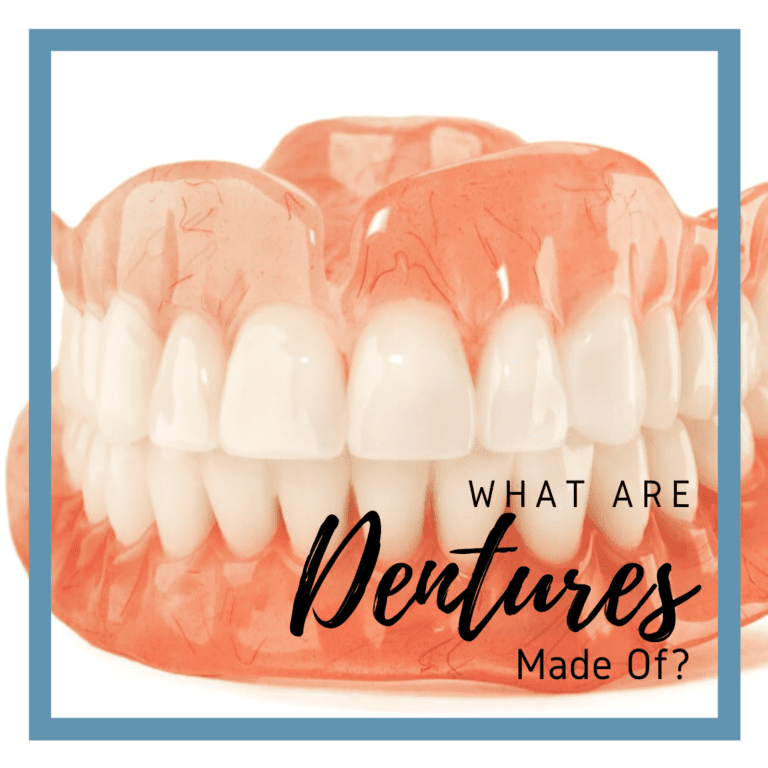What are Dentures Made Of?

Many people are familiar with the concept of dentures and we may even seen them featured in various cartoons, TV shows, and movies. However, these depictions are seen as comical and may look visually exaggerated. When you are actually considering dentures, you may be wondering what dentures are made of and how they are made. After all, as comical as those cartoons, TV shows, and movies are, you want to make sure that your real life dentures look natural.
Your dentist is also concerned with providing you with a smile restoration method that appears natural. Therefore, you can be assured that your dentures will not be comically large like the Hollywood depictions. Instead, dentures are produced very carefully using specific dental materials so that you get the best result. Let’s take a look at what dentures are made of and how they are made:
What are Dentures Made Of?
Dentures are made from a variety of dental materials including acrylic, nylon, porcelain, resin, or metal. The denture framework is generally made from acrylic, nylon, or metal. The specific materials used to fabricate your denture framework will depend upon the type of denture you are having placed. For example, partial dentures may use metal clips with an acrylic base, while full dentures can be made from acrylic but may use acrylic or metal gum attachments. Nylon may also be used in place of acrylic.
Along with the denture framework comes the false teeth themselves. False teeth for dentures can be made from resin or porcelain. Both have a natural appearance, however it is said that porcelain has both the color and texture of natural teeth. Porcelain is also used for its durability. However, porcelain can be abrasive on adjacent teeth and is usually only recommended for full dentures.
How are Dentures Made?
There are four main steps to denture fabrication, including:
- Measurements: the first step to making dentures consists of your dentist taking a dental impression of your mouth. This impression will be used to create a plaster model of your mouth so a denture of the appropriate size and shape can be made. In addition to the dental impression, your dentist may also take various measurements of your jaws.
- Models: the next step is to create models using the plaster model and fake teeth. The plaster model will be placed in a device called an articulator that replicates the jaw. Then, several fax teeth are
 attached with wax. The wax is then carved into a gum line and the model will be checked for fit. There may need to be several models tried on to determine the best fit. The model with the best fit will be used to create the final denture.
attached with wax. The wax is then carved into a gum line and the model will be checked for fit. There may need to be several models tried on to determine the best fit. The model with the best fit will be used to create the final denture. - Final Fabrication: during this step, the final denture will be fabricated from the dental materials you and your dentist have chosen. Starting with the wax model, plaster is poured to keep the denture’s shape and the wax is melted away. The plaster is then treated with a solution that prevents acrylic from sticking to it and the acrylic is injected where the wax was. Finally the plaster is removed, revealing the denture. Excess plaster and acrylic will be removed before polishing the final denture.
- Adjustments: once the final denture has been fabricated, it will be placed in the mouth and adjusted as necessary.
As you can see, there are various options for denture materials and an in-depth fabrication process to ensure the best fit. Both the dental materials and the fabrication process are important elements in making a visually-appealing and functional denture that makes you want to smile.






Recent Comments